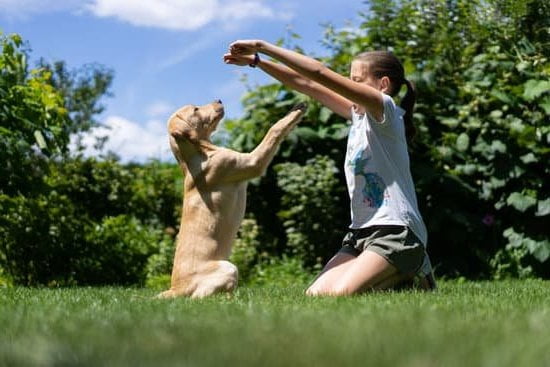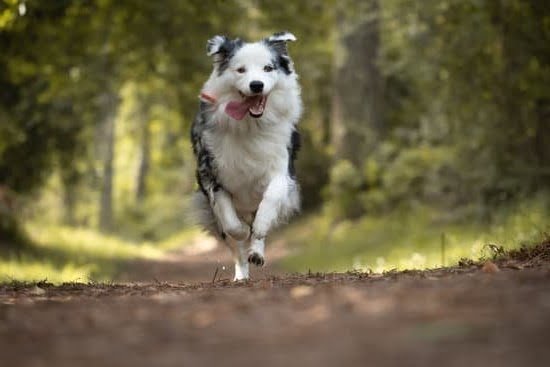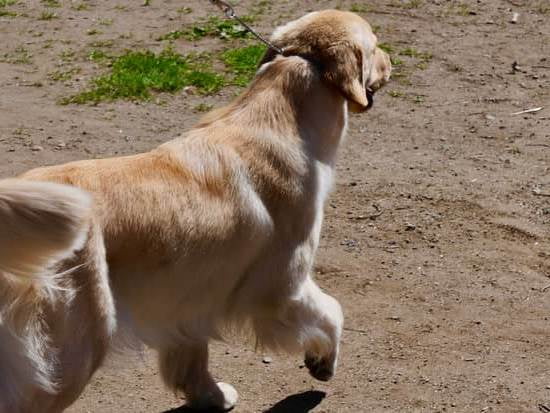Are you looking for tips on how to train a dog not to bite? Training your four-legged companion to inhibit their biting behavior is a crucial aspect of responsible pet ownership. From understanding the reasons why dogs bite to learning positive reinforcement training techniques, there are several effective strategies that can help curb this behavior.
Dogs may exhibit biting behavior for various reasons, including fear, territoriality, pain, or simply as a form of play. It is essential for pet owners to recognize the signs of aggression in their dogs in order to address and mitigate potential biting incidents. By establishing a strong bond of trust and respect with your dog, you can create a foundation for effective training and communication.
Positive reinforcement training techniques are highly recommended when addressing bite inhibition in dogs. Through consistent and gentle methods, you can teach your dog appropriate behavior while minimizing the risk of aggressive outbursts. Additionally, socializing your dog and properly managing their environment are key components in reducing biting behavior.
By taking proactive measures and seeking professional help if needed, you can successfully train your dog not to bite and ensure safe interactions with both familiar and unfamiliar dogs. Stay tuned for practical tips on safely interacting with unknown dogs to avoid biting accidents.
Recognizing the Signs of Aggression in Dogs
It is important for dog owners to be able to recognize the signs of aggression in their pets. Understanding these signs can help prevent potential biting incidents and promote a safe and harmonious relationship between the dog and its owner. Here are some common signs of aggression in dogs:
- Bared teeth
- Growling or snarling
- Stiff body posture
- Raised hackles
- Intense staring
- Lunging or nipping
- Ears pinned back
If you notice any of these behaviors in your dog, it is crucial to address the issue immediately to prevent any potential biting incidents. Ignoring these warning signs can lead to dangerous situations. Understanding the reasons why dogs bite and recognizing these signs of aggression is key in preventing dog bites.
Establishing a bond of trust and respect with your dog is essential in preventing aggressive behaviors. It is important to build a strong foundation of trust so that your dog feels comfortable and secure in various situations. Positive reinforcement training techniques for bite inhibition can also be effective in teaching your dog not to bite. Using rewards such as treats, toys, and praise when your dog exhibits gentle behavior can help reinforce positive habits.
Socializing your dog with other animals, people, and various environments can also reduce biting behavior. This exposure helps dogs become familiar with different stimuli and reduces fear-based aggression. Additionally, managing and controlling your dog’s environment to prevent biting incidents is crucial. Keeping an eye on triggers that may cause aggressive behavior, such as food guarding or rough play, can help prevent potential biting accidents.
By recognizing the signs of aggression in dogs, establishing trust and respect, utilizing positive reinforcement training techniques, socializing your pet, and managing their environment effectively, you can work towards training your dog not to bite. If despite these efforts the biting issues persist, seeking professional help from a qualified trainer or veterinarian is recommended. Remember that safely interacting with unknown dogs also requires caution and attentiveness to avoid potential biting accidents.
Establishing a Bond of Trust and Respect With Your Dog
When it comes to training a dog not to bite, establishing a strong bond of trust and respect is crucial. This foundation will help your dog better understand and respond to your commands, making it easier to teach them not to exhibit biting behavior. Here are some tips on how to build this important connection with your furry friend:
1. Spend quality time with your dog: Make sure to consistently interact with and engage in activities with your dog to build a strong relationship. This can include playing, going for walks, or simply snuggling on the couch.
2. Use positive reinforcement: Reward good behavior with treats, praise, or affection. This will help your dog associate positive experiences with following commands and exhibiting non-aggressive behavior.
3. Establish clear boundaries: Set rules and guidelines for your dog’s behavior and stick to them consistently. This will help your dog understand what is expected of them and reduce the likelihood of biting incidents.
Now that we have covered the importance of building trust and respect with your dog, let’s explore some positive reinforcement training techniques that can be used specifically for bite inhibition.
Positive Reinforcement Training Techniques for Bite Inhibition
When it comes to training a dog not to bite, positive reinforcement techniques are highly effective. Positive reinforcement involves rewarding your dog for good behavior, instead of punishing them for bad behavior. This method helps dogs understand what is expected of them and encourages them to repeat that behavior.
To begin with, using treats as rewards can be very effective in teaching a dog not to bite. Whenever your dog refrains from biting or exhibits gentle behavior, offer them a treat and praise them.
Another positive reinforcement technique is using toys to redirect biting behavior. When your dog starts nipping or biting, gently take the toy and encourage them to play with it instead. This not only teaches the dog that there are appropriate objects to bite but also helps release excess energy which may be causing the biting behavior.
Consistency in training is key when using positive reinforcement techniques to teach bite inhibition. Make sure everyone interacting with the dog uses the same commands and reinforcement methods so as not to confuse the animal.
It’s important to keep in mind that while training a dog not to bite, yelling at or physically punishing the dog can have negative effects on their behavior and well-being. Instead, focus on rewarding good behavior consistently and patiently.
| Positive Reinforcement Training Techniques | Description |
|---|---|
| Using treats as rewards | Rewarding dogs with treats when they exhibit gentle behavior or refrain from biting. |
| Redirecting with toys | Gently redirecting biting behavior towards appropriate toys for playtime. |
| Consistency | Maintaining consistent training methods and commands among all interactions with the dog. |
Socializing Your Dog to Reduce Biting Behavior
Socializing your dog is a crucial part of reducing biting behavior and ensuring they are well-adjusted and comfortable around people and other animals. Proper socialization can help prevent fear-based aggression and teach your dog how to interact calmly and positively with others.
Introduction to Socialization
Socialization involves exposing your dog to a variety of people, animals, environments, and experiences in a positive way. This helps them become more confident, predictable in their behavior, and less likely to react aggressively when in unfamiliar situations.
Positive Experiences With Humans and Other Animals
One of the key aspects of socialization is ensuring your dog has positive interactions with both humans and other dogs. Encouraging gentle play, exposure to different ages, genders, races, and types of people can help prevent fear-based aggression. Similarly, allowing your dog to interact with well-mannered dogs under controlled circumstances can also teach them important social skills.
Gradual Exposure to Different Environments
Introducing your dog to various environments such as parks, beaches, busy streets, or even pet-friendly cafes can help them become comfortable in different settings. It is essential to start with less overwhelming environments before gradually exposing them to busier or louder places. This gradual approach can reduce anxiety-related aggression towards unfamiliar surroundings.
By properly socializing your dog using these techniques, you can significantly reduce the likelihood of biting behavior. However, it’s important for owners to remember that while proper socialization is vital for preventing aggressive behaviors in dogs, seeking professional help or training assistance should still be considered if problematic biting behaviors persist.
Managing and Controlling Your Dog’s Environment to Prevent Biting Incidents
Just as with understanding the reasons why dogs bite and recognizing signs of aggression, it is essential to manage and control your dog’s environment to prevent biting incidents. This section will focus on how to create a safe and conducive environment for your dog that minimizes the risk of aggressive behavior.
Proper Supervision
One crucial aspect of managing your dog’s environment is proper supervision. When introducing your dog to new people or situations, make sure to closely monitor their behavior. If you notice any signs of discomfort or aggression, remove them from the situation immediately.
Training and Socialization
Another important factor in preventing biting incidents is providing adequate training and socialization for your dog. By exposing them to various people, animals, and environments from a young age, you can help them feel more comfortable and less likely to exhibit aggressive behavior.
Providing a Safe Space
Additionally, it is essential to provide your dog with a safe space where they can retreat when feeling overwhelmed or anxious. Create a designated area in your home where your dog can relax and feel secure. This could be a crate or a specific room where they can go when they need some time alone.
By focusing on managing and controlling your dog’s environment, you can significantly reduce the risk of biting incidents while creating a safe and comfortable space for your furry friend. Remember that prevention is key when it comes to addressing biting behavior in dogs.
Seeking Professional Help for Persistent Biting Issues
If your dog continues to exhibit biting behavior despite your best efforts, seeking professional help is crucial. A professional dog trainer or animal behaviorist can provide valuable insight into why your dog may be exhibiting persistent biting issues and offer personalized training techniques to address the problem.
Professional trainers have the expertise to assess your dog’s specific needs and develop a customized training plan to address the underlying causes of their biting behavior. They can also provide guidance on how to train a dog not to bite using effective and humane methods tailored to your pet’s temperament and personality.
It’s important to seek help from a qualified professional as soon as possible if your dog’s biting behavior poses a risk to the safety of others. By addressing persistent biting issues with the help of an expert, you can work towards creating a safe and harmonious environment for both your pet and those around them.
| Professional Help | Benefits |
|---|---|
| Expert assessment of dog’s specific needs | Customized training plan tailored to address biting behavior |
| Guidance on effective, humane training methods | Risk reduction for safety of others |
Tips for Safely Interacting With Unknown Dogs to Avoid Biting Accidents
In conclusion, training a dog not to bite requires patience, consistency, and understanding of your pet’s behavior. By first understanding the reasons why dogs bite and recognizing signs of aggression, you can take proactive steps to prevent biting incidents. Establishing a bond of trust and respect with your dog is crucial in ensuring that they respond positively to training techniques for bite inhibition.
Positive reinforcement is key in teaching your dog not to bite, as well as socializing them to reduce their biting behavior. Additionally, managing and controlling your dog’s environment can go a long way in preventing biting incidents. Seeking professional help for persistent biting issues is important, as experts can provide specialized guidance tailored to your dog’s individual needs.
When interacting with unknown dogs, it’s essential to follow tips for safely engaging with them to avoid potential biting accidents. By respecting the dog’s space and body language, asking for permission from the owner before approaching the dog, and allowing the dog to initiate contact, you can minimize the risk of being bitten.
Overall, training a dog not to bite involves both proactive prevention measures and responsible interactions with unfamiliar dogs. Understanding these fundamentals will help create a safe and harmonious relationship between humans and our canine companions.
Frequently Asked Questions
Can a Dog Ever Be Trained Not to Bite?
Yes, a dog can be trained not to bite through consistent and patient training. It’s important to establish clear boundaries, use positive reinforcement, and seek professional help if needed to address any underlying issues causing the biting behavior.
How Do I Get My Dog to Stop Biting?
Getting your dog to stop biting requires understanding why they are biting in the first place. Is it out of fear, territorial behavior, or playfulness? Addressing the root cause and using positive reinforcement techniques like redirecting their attention or providing chew toys can help modify this behavior.
What Command Stops Dogs From Biting?
The “Leave It” command is often used to stop dogs from biting. By teaching your dog to respond to the “Leave It” command, you can redirect their focus away from whatever is triggering the biting behavior. Consistent training and positive reinforcement are key in making this command effective.

Welcome to the blog! I am a professional dog trainer and have been working with dogs for many years. In this blog, I will be discussing various topics related to dog training, including tips, tricks, and advice. I hope you find this information helpful and informative. Thanks for reading!





